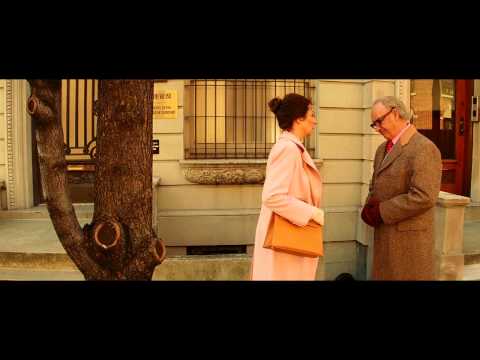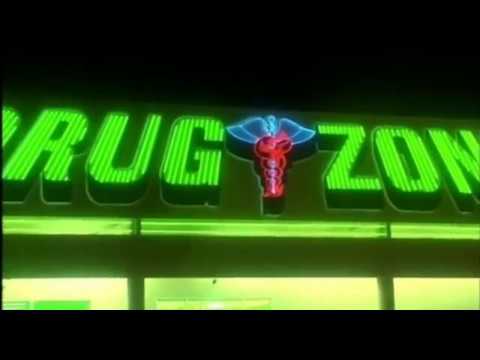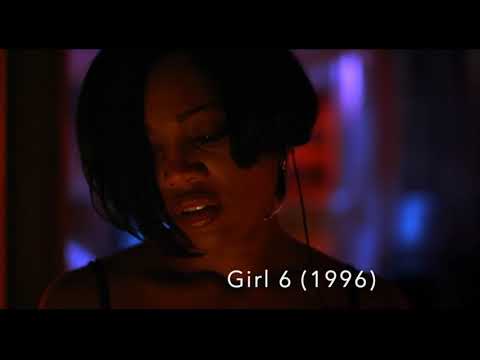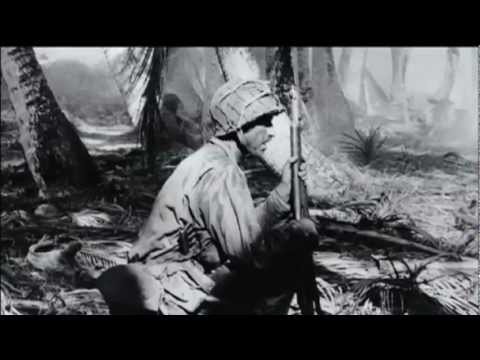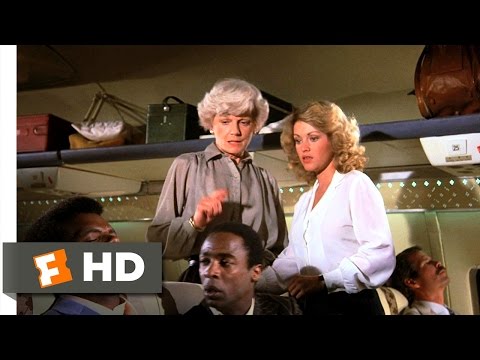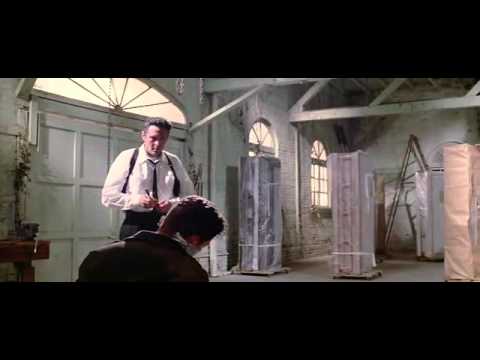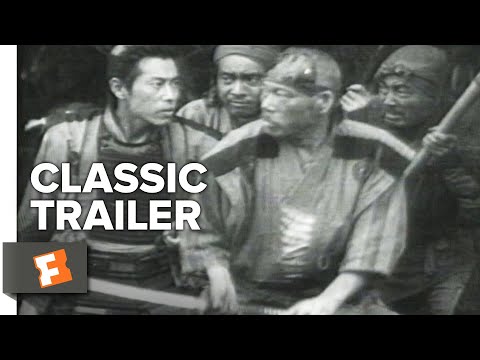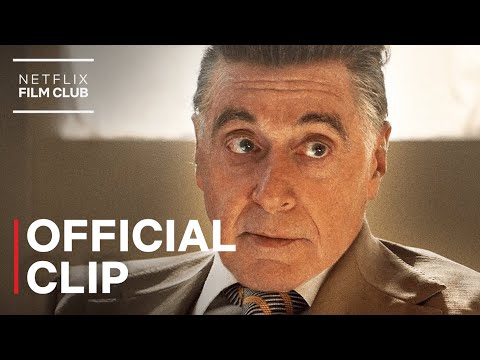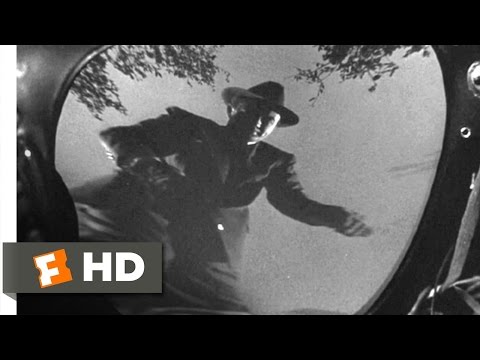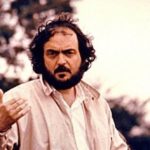It’s one thing to make a great movie. It’s quite another to make one in a way instantly identifiable for its directorial calling cards. Here are ten directors whose distinctive styles helped make them legends.
10 Wes Anderson
The director of such classics as The Royal Tenenbaums, Fantastic Mr. Fox, and The Life Aquatic with Steve Zissou is modern filmmaking’s most effectively weird filmmaker. With few exceptions, Wes Anderson movies are more live-action storybooks than conventional films, with relatively simple plots serving as vehicles for ornate typography, elaborately embellished set designs, and quirky characters toggling between outcasts, antiheroes, and flat-out oddballs. One telltale sign of an Anderson film is that flourish is at the forefront. Characters like Royal Tenenbaum, Steve Zissou, and Rushmore’s Max Fischer are exaggerated caricatures of themselves, faux elitist Anglo-Saxons in exclusive settings. Artistic angles, stop-motion techniques, and color schemes varyingly muted or extreme help add to the eccentricity. Throughout most of Anderson’s films, one common thread is symmetry, which he tends to incorporate in angles ranging from bird-eye panoramas to single-character closeups. The device serves to make shots simultaneously aesthetically pleasing and somewhat disorienting, as many scenes often seem too picture-perfect to be realistic. Again, with Anderson, it’s typically art first, storytelling second. Through the years, Anderson’s success has snowballed upon itself in one important way: terrific actors eager to work with him again and again. Bill Murray, Anjelica Huston, Adrian Brody, and Jason Schwartzman have all graced multiple Anderson films, with B-level actors like Owen Wilson made more effective by the star-studded cast around them.[1]
9 Oliver Stone
Oliver Stone is an incredible filmmaker who may also be incredibly insane. But nuts or not, his strategic sensationalism has yielded some exceptionally memorable movies. Stone’s at his best when using innuendo to leave audiences suspicious of conventional wisdom or convinced of official malfeasance. Any Given Sunday is a strong example. At its surface, the film follows the successes and setbacks of a pro (American) football team. But bubbling barely underneath is the grotesque gladiatorialism that, in an inherently violent society, passes for family-oriented entertainment. Stone’s bomb-throwing doesn’t always land. Alexander, which chronicled the exploits of Alexander the Great, was a 3-hour, 27-minute snooze, and 2006’s World Trade Center somehow managed to make 9/11 tedious. Likewise, seemingly compelling flicks like 1995’s Nixon and 2008’s W.—released while its subject, George W. Bush, was still the sitting president—simply weren’t very good. But two films cement Stone’s legacy. The first is 1991’s JFK, which employed Stone’s fanaticism by lending credibility to eccentric New Orleans District Attorney Jim Garrison and, in doing so, helped birth a new generation of assassination conspiracy theorists. The other is his masterpiece, 1994’s Natural Born Killers, which dramatically showcases the glorification of violence in the then-blooming age of sensationalist magazine TV “journalism.” Here, Stone shifts between gory murder, trippy illustration, and mockumentary to shine a mirror back on the audience. In the end, Mickey and Mallory are as American as apple pie, making us responsible for their Bonnie and Clyde-esque killing spree.[2]
8 Spike Lee
The industry’s most famous African-American director has lent more than social justice and Black cultural celebration to filmmaking. Spike Lee is also the inventor of a particular type of scene called the double dolly shot. A dolly is a camera mounted on a cart that travels along tracks, which allows a scene to move without unsteadying the camera. In use since 1907, dolly shots are nearly as old as moviemaking itself. It was Lee, however, who introduced the double dolly, in which not only the camera but also the actor is dollied. The result is a motionless central character seeming to float as the background glides past. Lee employs the double dolly quite frequently and for various reasons. Often, the shot is used to take a narrative timeout that allows a character to provide added commentary. At other times, the effect provides a trippy disorientation, signifying that the character doesn’t quite have a grasp on the situation. Invariably, the double dolly disrupts the audience’s conventional viewing rhythm, lending the shots extra emphasis. Another Lee trait is leaning into controversy. With 1992’s Malcolm X, Lee came under fire for pinning the civil rights leader’s assassination on the Nation of Islam (though this was likely accurate). Most recently, he filmed and ultimately cut scenes showcasing 9/11 “Truthers”—conspiracy theorists who falsely believe the World Trade Center attacks were perpetrated by the U.S. government—from an HBO documentary chronicling NYC from 2001 through COVID-19.[3]
7 Ken Burns
While other documentarians explore singular events or themes—9/11, the 2008 fiscal crisis, the opioid epidemic—Burns wrangles the Civil War, American westward expansion (The West), World War II, and jazz. These feats, often at least nine multi-hour episodes apiece, are akin to teaching a college course on the subjects. Period music, grainy black and white photos, war plan maps, mini-personal histories. Add in a narrator and intersperse with subject matter experts, and Burns manages to condense something as complex as the Civil War into 11 hours and 30 minutes of brilliance. But even Burns has his limits—and his talents extend to recognizing this. For his WWII doc The War, Burns circumvents the impossibility of comprehensively tackling humankind’s broadest, deadliest armed conflict by instead following the true stories of four Americans who, between them, seemed to pop up in nearly every major American battle. Burns is also cognizant that, sometimes, a topic is not only exceptionally broad but living and breathing. For example, his comprehensive history of baseball, laid out in nine multi-hour “innings,” was released in 1994. Shortly thereafter, the game saw several landmark events, including a World Series-cancelling strike, the introduction of Wild Card playoff spots, and a sweeping steroids scandal that Burns knew required revisiting. So in 2010, his “10th Inning” covered all that plus the late-1990s Yankees dynasty, the introduction of advanced analytics into decision-making, and the end of Boston’s 86-year championship drought.[4]
6 David Zucker
While David Zucker hasn’t elicited so much as a chuckle in over a quarter-century, he makes this list for two reasons. First, the comedy director has a decidedly distinctive style. Second, he has written and directed two of the 10 funniest films ever made. We’re talking, of course, about 1980’s Airplane! and 1988’s Naked Gun: From the Files of Police Squad! Watch this video on YouTube The style is, simply, rapid-fire jokes that hardly let audiences catch their breath between laughs. Zucker is the master of throwing random, spaghetti-at-the-wall one-liners and slapstick and having an outsized portion of them stick. He throws jokes like a flyweight throws boxes—lots of quick jabs, followed up with the occasional haymaker that leaves audiences floored with laughter. The highlights from his dueling masterpieces alone are Hall of Fame-worthy. An old white woman who speaks jive. An undercover cop posing as an umpire breakdances after a called third strike. An air traffic controller who, as the movie progresses, picked a bad week to quit smoking, drinking, and sniffing glue, respectively. Zucker is also almost single-handedly responsible for transitioning Leslie Nielsen from an accomplished “serious movie” actor into one of the funniest film comedians of all time, despite often sharing the screen with terrible actor and double-murder enthusiast O.J. Simpson. Here’s O.J. nearly dying.[5]
5 Quentin Tarantino
Casual, superfluous violence, anyone? It’s tempting to see blood-spatter aficionado Quentin Tarantino as a one-trick pony—a director whose signature ultra-violent scenes are an attempt to distract from shortcomings elsewhere. But what’s exceptional about Tarantino is that, despite being most associated with bloodbaths, his filmography would be stellar even without them. This was true right from his directorial debut, 1992’s Reservoir Dogs. Easily overlooked among the bank robbery-turned-mass murder, hostage torture, and undercover cop slowly bleeding to death is a true act of filmmaking mastery: Tarantino manages to develop a cast of anonymous criminals so guarded they eschew names for colors (Steve Buscemi: “Why do I have to be Mr. Pink?”). While Michael Madsen chopping off a cop’s ear to the upbeat rhythm of “Stuck in the Middle with You” may be the film’s marquee moment, the movie’s genius is borne of dialogue, pacing, and suspense. Tarantino is at his best when protagonists have a clear, evil foil and a mission to accomplish, as such plotlines allow the audience to enjoy extreme violence guiltlessly. In 2009’s Inglorious Bastards, we revel in the scalping of Nazis during France’s occupation as we follow a team led by Brad Pitt at his smug, cocksure best. Three years later, Django Unchained flipped the script on the casual violence exacted against slaves as Jamie Foxx shoots his way through a notorious plantation to rescue his long-lost wife. [6]
4 Akira Kurosawa
Over a nearly 60-year career, Akira Kurosawa earned a reputation for being Japan’s greatest filmmaker—and one of the top few directors, period. Kurosawa left an indelible mark on filmmaking at large, but his working methods were perhaps his most noteworthy legacy. Simply put, he was difficult to work with, from a film’s inception to its finished, theater-ready product. A true moving-picture perfectionist, Kurosawa took command of scripts and lorded over writers and, once in production, had a vision that often took both actors and cameramen dozens of takes to meet. In post-production, he was his own meanest editor, chopping and rearranging until his own lofty expectations were met. Over time, Kurosawa’s perfectionism became Darwinian: as his fame and reputation grew, his filmmaking teams were drawn from an ever-winnowing pool loosely called “Kurosawa-gumi,” or “Kurosawa group.” It was an A-list director demanding an A-list moviemaking unit. As a dictatorial director, Kurosawa had carte blanche to create and innovate as he saw fit. In the 1940s and 50s, his groundbreaking uses of axial cuts—a type of jump cut where the camera suddenly moves closer or further away—and screen wipes became part of filmmaking’s device repertoire in subsequent years. Among Kurosawa’s finest and most influential works is 1954’s Seven Samurai, whose montage-esque build-up, ambitious action scenes, riveting underdog story, and seemingly inescapable situations have inspired (largely inferior) action films for nearly seven decades.[7]
3 Martin Scorsese
Martin Scorsese thrives on violent subcultures. He’s a master at deep dives into seedy underworlds that protagonists and antiheroes must deftly navigate to thrive or survive. Watch this video on YouTube The mafia (Goodfellas). Porn and prostitution (Taxi Driver). The mafia again (Casino). Boxing (Raging Bull). The mafia again (The Departed). Mid-19th Century slum gangs (Gangs of New York). The mafia yet again (The Irishman). Scorsese’s stories immerse audiences in an underbelly society—narrowing their focus before expanding upon it extensively. Extensively, indeed. Scorsese makes some of the longest feature films in show business. Most eclipse two hours, and many approach three. Notably, his frequent use of protagonist voiceovers for context—typically at the beginning of a new scene—is a device to speed things up; without them, communicating that information visually may have made some Scorsese films too long for movie theaters, which have a monetary interest in maximizing showtimes. In 2019, Scorsese was freed from the bondage of brevity with The Irishman, which was exclusively distributed by Netflix. The result was a three-and-a-half-hour gem chronicling the disappearance of Jimmy Hoffa. Finally, like many filmmakers, Scorsese has certain actors he favors. One is Robert De Niro, the other Leonardo DiCaprio, who has starred in five Scorsese films, including The Departed, which brought Scorsese a long-deserved Oscar for Best Director.[8]
2 Alfred Hitchcock
Alfred Hitchcock is the only director on this list who stands as the undisputed greatest in his genre. Buttressed by Hitchcock’s five Academy Award nominations for Best Director, every other horror filmmaker is competing for the silver. Hitchcock’s most notable moniker, “Master of Suspense,” is as well-deserved as a superlative can be. His innovative pacing brought unprecedented levels of build-up not only into horror films but other genres. Moreover, Hitchcock inherently understood that fright was more psychological than physical—that the anticipation of something terrible was more terrifying than the terrible thing itself. Ironically, it’s what Hitchcock didn’t have at his disposal during his filmmaking career—elaborate special effects—that helped cement his legacy. Necessity is often the mother of invention, and Hitchcock—already an exceptionally inventive director—had to find ways to enthrall and frighten moviegoers without repulsive monsters killing in superhuman ways. It’s also worth noting that Hitchcock managed to mortify at a time when abundant goriness simply wouldn’t fly and, even if it did, blood isn’t as scary in black-and-white. A sterling example of Hitchcock’s ahead-of-its-time brilliance is Miriam’s death scene from 1951’s Strangers on a Train. Her demise has several eminently recognizable signs of modern horror-movie deaths: the “audience fake-out” as she screams in the Tunnel of Love, yet emerges unharmed; the stalker waiting for her to momentarily straggle away from her friends; the hushed deathblow seen through a warped lens—in this case, Miriam’s glasses, which fall to the ground as her killer strangles her.[9]
1 Stanley Kubrick
Many (including me) consider Stanley Kubrick the greatest filmmaker of all time. Pigeon-holing Kubrick into a distinctive style would be unworthy of his genius, so instead, let’s focus on a common theme. Here, among Kubrick’s most effective directorial devices is his lack of faith in humanity. Many of his films serve as a blunt yet artistic warning that mankind is its own hubris-driven worst enemy. Watch this video on YouTube Take, for example, arguably his masterpiece (“arguably” only because he has several masterpieces), 2001: A Space Odyssey. Released in 1968 at the height of the U.S.-Soviet space race, the film showcases the downsides of technological competition: a lack of checks and balances fueled by one-upmanship resulting in AI too smart for mankind to control. Not surprisingly, Kubrick doesn’t trust humanity with nukes, either, as seen in 1964’s Dr. Strangleove. All it takes, he surmises, is one paranoid rogue general—mockingly named Jack D. Ripper—to usher in a snowball effect that leads to the obliteration of civilization as we know it. Patterned after a protégé of insanely hawkish general Curtis LeMay—who nearly led the U.S. to nuclear war during the 1962 Cuban Missile Crisis—Ripper is Exhibit A that many not only don’t fear nuclear war but, per Slim Pickens’s epic bomb-bucking descent into doom, would openly embrace it. A Clockwork Orange. Full Metal Jacket. The Shining. A strong argument can be made that Kubrick claims five or more of the best 20 or 25 films ever.[10] Read More: Twitter Website
